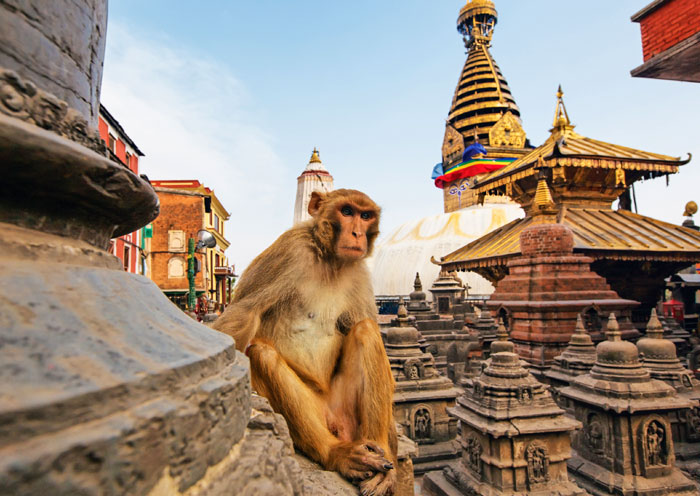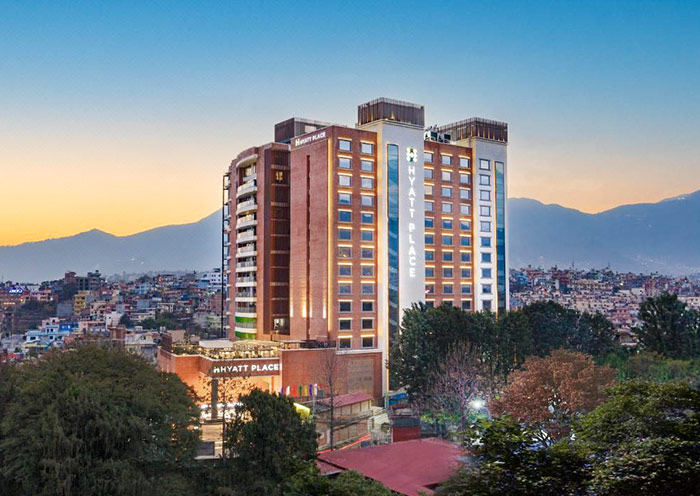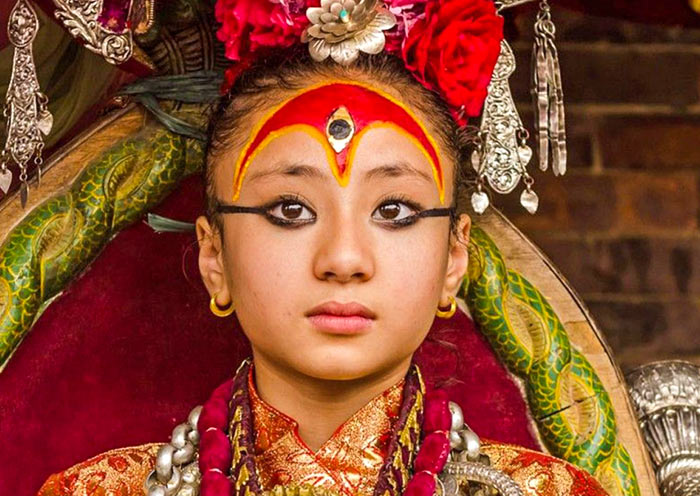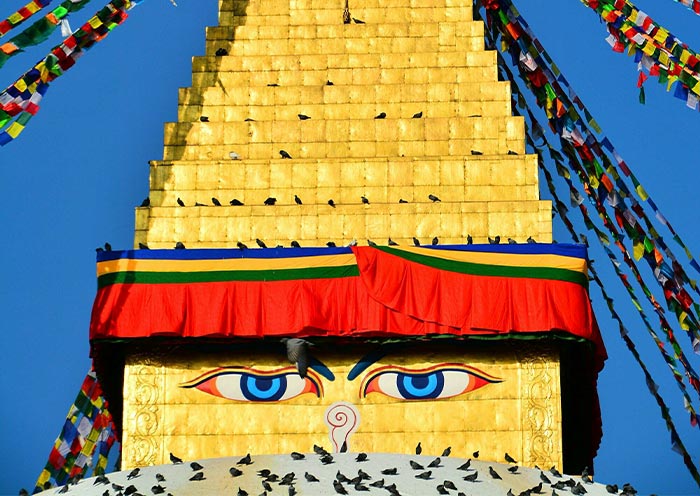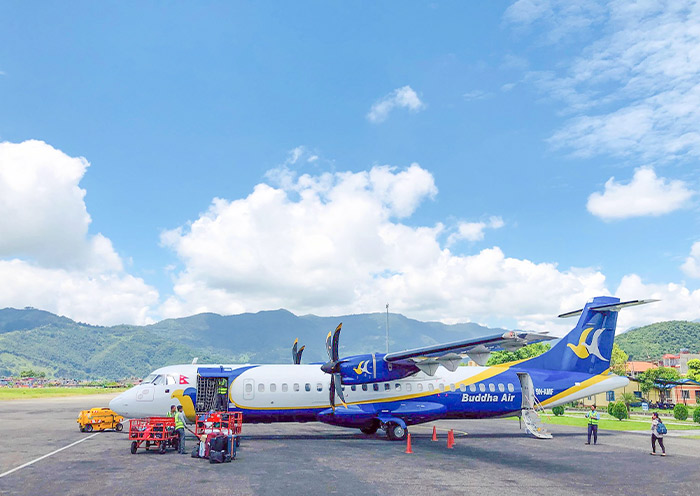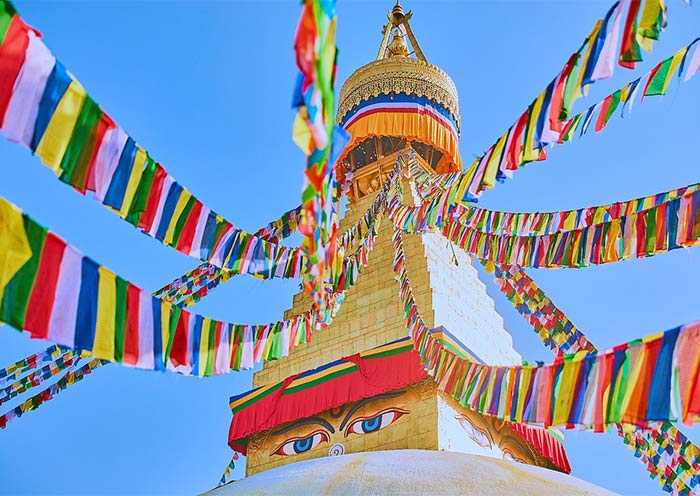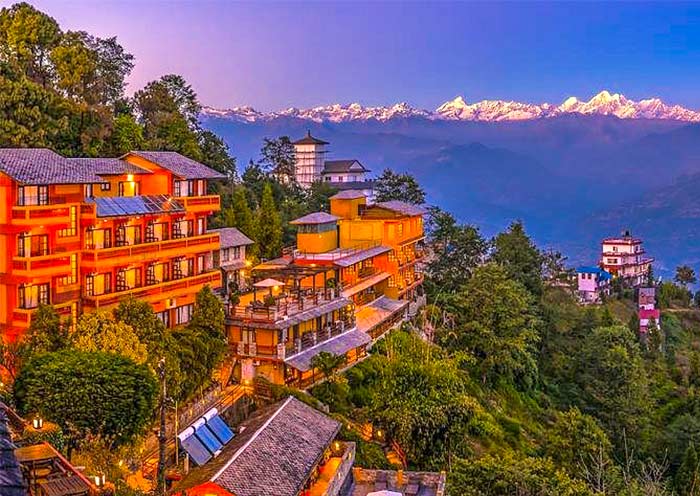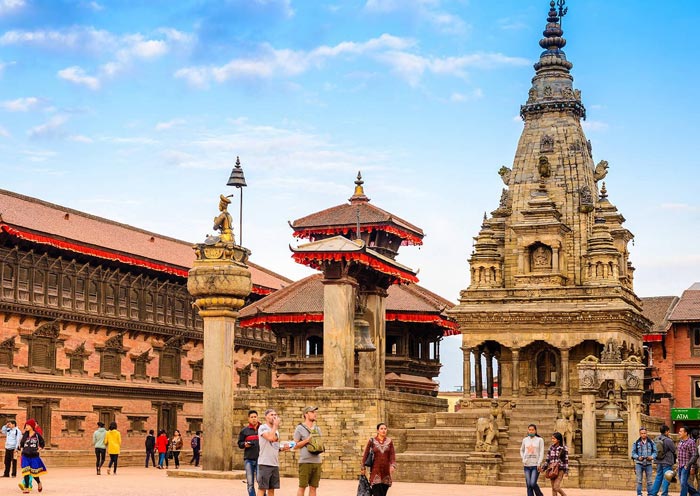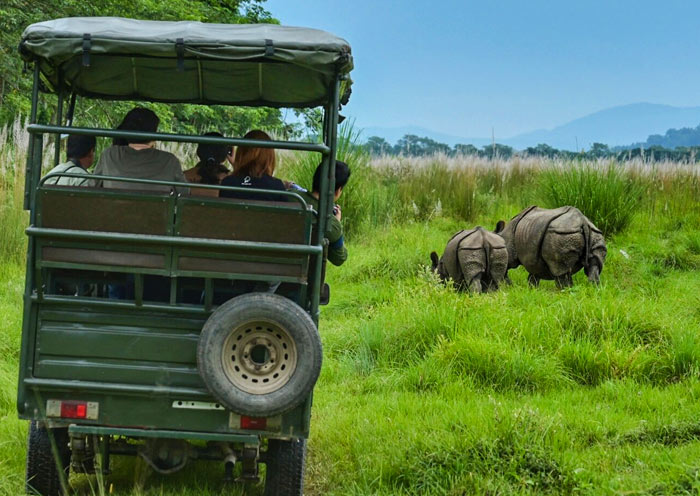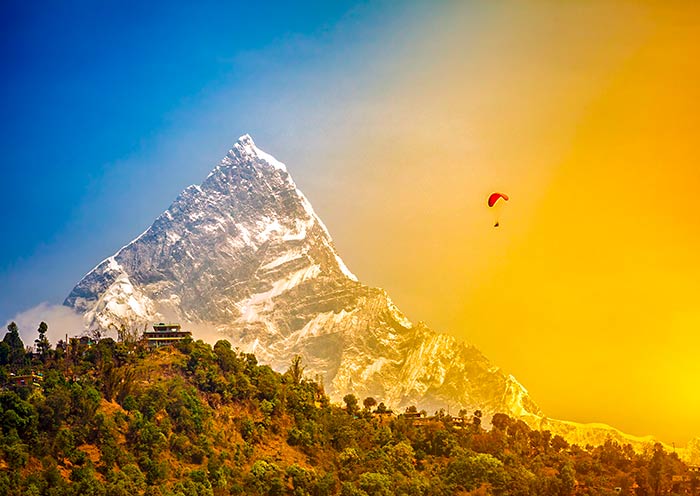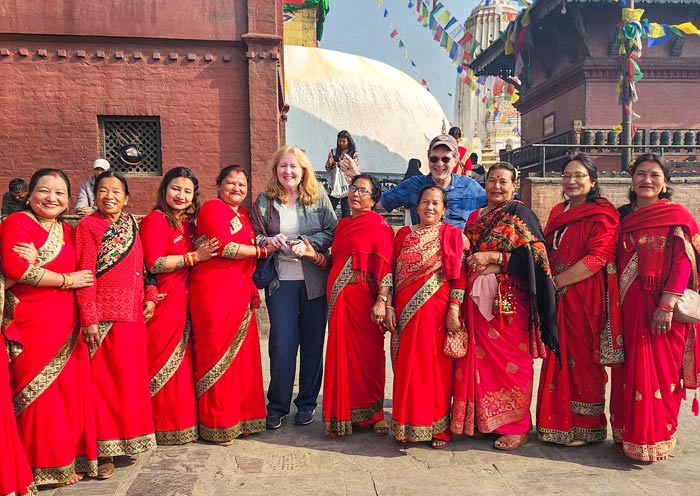Let's start with key facts of famous Temples in Kathmandu.
| Temple | Highlights | Opening Hours | Entrance Fee | Photography | Getting There |
|---|---|---|---|---|---|
| Pashupatinath | Sacred Hindu rituals by the Bagmati River | 10 AM - 5 PM | NPR 1000 (foreigners) | Allowed in some areas | Taxi, bus, or walk from airport |
| Swayambhu | Panoramic city views, the Monkey Temple | 24/7 | Free (donations welcome) | Allowed, be respectful | Taxi, bus, or walk from Thamel |
| Boudhanath Stupa | Largest stupa in Nepal | 7 AM - 9 PM | Free | Allowed, be respectful | Taxi, bus, or walk from Thamel |
| Kumari Ghar | Glimpse the "living goddess" Kumari | 24/7 | Free (donations welcome) | Strictly prohibited | Within Durbar Square |
| Budhanilkantha Temple | Colossal reclining Vishnu statue | 5 AM - 7 PM | Free (donations welcome) | Allowed, be mindful | Taxi, bus, or cycle from Thamel |
| Changu Narayan Temple | Ancient Vishnu temple, breathtaking mountain views | 9 AM - 9 PM | NPR 350 (foreigners) | Not allowed inside | Bus from Kathmandu to Bhaktapur, then another bus |
Read on to learn the Fascinating Stories & Useful Tips of Temples in Kathmandu!
Or simply Contact Us to book your in-depth Culture Tour with Temples in Nepal!
1. Pashupatinath: Divine Abode of Shiva, Lord of Creatures
The Pashupatinath Temple, a UNESCO World Heritage Site, is dedicated to Pashupati, an incarnation of Shiva. The temple's name, "Pashupati," means "Lord of creatures," and Lord Shiva is the ultimate ruler of all creatures. As the most sacred temple in Kathmandu, Pashupatinath Temple complex boasts a rich history.
Once upon a time, at the dawn of a new millennium, a sacred Shiva lingam was discovered in Kathmandu, marking the birth of a spiritual sanctuary that would become known as the Pashupatinath Temple today.
Over the centuries, it stood as a testament to the faith and devotion of the people, Hindus from all over world come here to seek blessings from Lord Shiva, offer their prayers at Pashupatinath Temple.
This temple of Kathmandu has also been the site of many important events throughout history, including the coronation and cremation of Nepal's kings, the rise and fall of dynasties all happened here.
Architecture and Ornamentation of Pashupatinath: A Kaleidoscope of Devotion to Gods
The main temple of Pashupatinath, constructed in the Nepalese pagoda style, is crowned with a two-tiered, gold-plated roof. The Pashupatinath temple stands on a square base platform, reaching a height of 23m, or 75.5 feet, from base to pinnacle. The main temple features four primary doors, all adorned with silver sheets.
The Pashupatinath temple complex is a vast collection of over 500 temples, shrines, and cremation sites, all exquisitely decorated, showcasing the architectural prowess and devotion of the ruling dynasties. The complex is a sprawling assortment of temples, ashrams, sculptures, and inscriptions erected over centuries along the sacred banks of the Bagmati river.
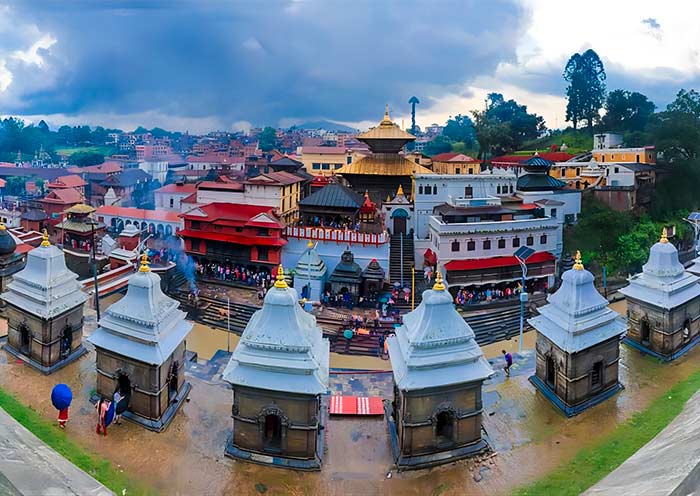
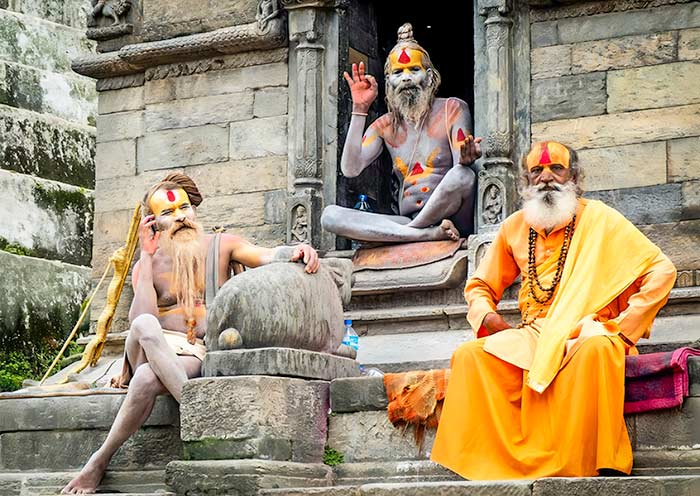
Cremation Customs and Hindu Convictions: Witness Cycle of Life at the Famous Temple
Cremation at the Pashupatinath Temple is a sacred ceremony, embodying the journey of the soul and the cycle of life and death in Hinduism.
While Kathmandu offers cremation grounds at various temples, such as Aryaghat and Guheshwari Temple, none hold the sacred weight and rich tapestry of Pashupatinath Temple. Here are the reasons:
- Lord Shiva's Abode: Dedicated to the Destroyer and Transformer, Pashupatinath offers liberation from the cycle of rebirth. Dying here is believed to grant moksha, a state of ultimate freedom.
- Sacred Waters: The Bagmati River flows alongside, its purifying waters cleansing the soul for the next journey.
- Deeply Rooted Traditions: Centuries of tradition have cemented Pashupatinath's position as the central hub for cremations in Kathmandu, attracting devotees from across Nepal and beyond.
The ritual is thought to help the individual break away from their earthly existence and hasten the soul's spiritual voyage. The body is cleansed with water from the Bagmati River and then draped with ceremonial coverings.
Hindus believe that a human's physical body must return to the five elements upon death, and cremation accelerates this process compared to burial.
The Arya Ghat (cremation ground of the Pashupatinath Temple), located on the banks of the sacred Bagmati River in Kathmandu, is a crucial part of the Pashupatinath Temple complex. This open-air cremation site is where the cycle of life and death converges, offering a moving and potent insight into Hindu customs.
If you're interested in learning more about specific cremation practices within a particular temple, seeking information from a local guide or individuals familiar with the traditions is highly recommended.
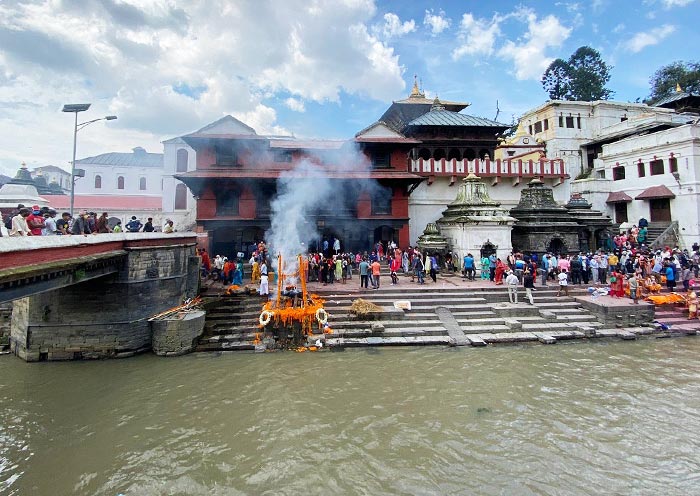
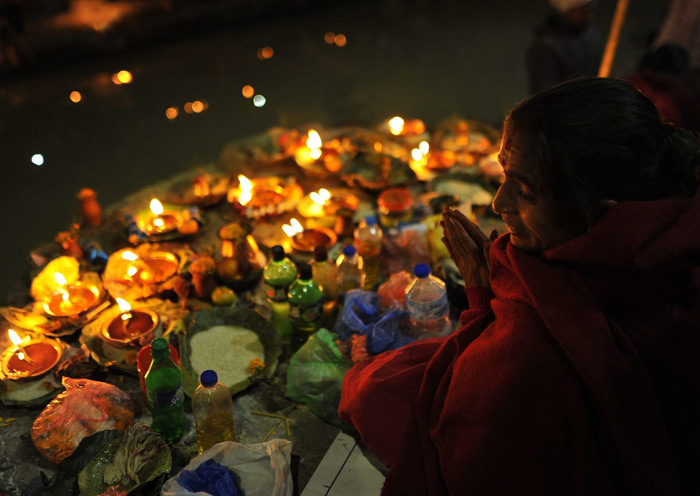
Things to do at Pashupatinath Temple: Immersive Experience with Sacred Rituals
Major Festivals at Pashupatinath:
- Maha Shivaratri: (February/March) This grand festival, spanning several days, celebrates Lord Shiva's triumph over demons.
- Teej Festival: (August/September) Primarilyfor women, this colorful festival celebrates femininity and marital bliss.
- Janai Purnima: (August/September) This sacred thread-wearing ceremony marks the beginning of a new year for Brahmins and Kshatriyas.
Daily Rituals at Pashupatinath:
- Sandhya Arati: (Evening) Witness the enchanting evening prayer ceremony for Lord Shiva. This is one of the highlights of Pashupatinath Temple. Our seasoned local guide would provide insights for in-depth culture exploration. Contact us for an in-depth Nepal tour .
- Patanjali Pooja: (Morning) Observe the intricate puja dedicated to Lord Patanjali, the divine yogi, performed by priests adorned with white robes.
- Holy Dip in Bagmati: (Throughout the day) Many devotees take a dip in the sacred Bagmati River, believed to wash away sins and bring good luck.
2. Swayambhunath Temple: The Self-born Lotus Stupa on the Hill
Among the famous temples in Kathmandu, the Swayambhunath Temple, fondly known as the Monkey Temple, stands out. This ancient religious complex, perched on a hill in Kathmandu, Nepal, is a beacon of faith for both Buddhists and Hindus. Its history spans over 2,000 years, making it a significant part of Kathmandu's temples.
The Swayambhu Purana, a sacred text, narrates the origin of the Swayambhu stupa.
Once upon a time, before Kathmandu sprawled across the valley, a shimmering lake reflected the heavens. From its heart, a lotus bloomed, its petals radiating a light that whispered promises of enlightenment. This marvel attracted Manjushri, the bodhisattva of wisdom, all the way from the sacred peaks of Wutaishan Mountain in China.
He saw the lotus's potential to enlighten the world, but the surrounding water kept pilgrims at bay. With a compassionate gesture, Manjushri carved a mighty channel, draining the lake and revealing the majestic lotus-shaped hill beneath.
The light, now freed, transforming into the magnificent Swayambhu stupa, forever self-existing, forever radiating wisdom and peace.
And so, where once water mirrored the clouds, now stands a testament to divine light and human yearning. Swayambhu, the self-created, beckons every pilgrim with the story of a lotus, a bodhisattva, and a valley forever transformed, Kathmandu, the city of temples.
Myth or science, Swayambhunath stands as a testament to transformation, echoing the valley's own dramatic birth from a watery cradle.
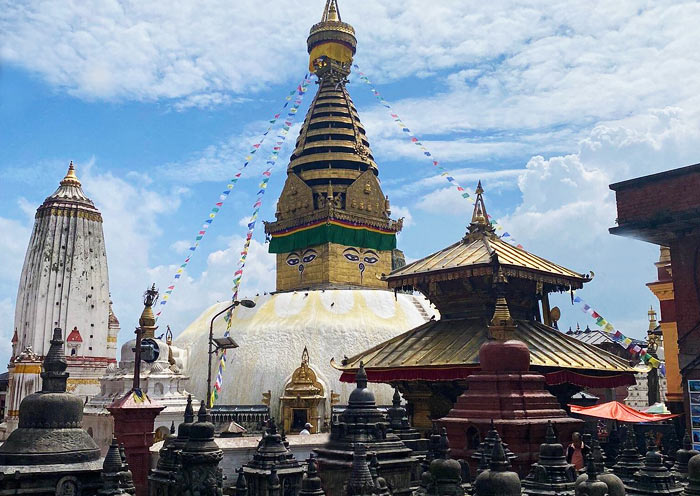
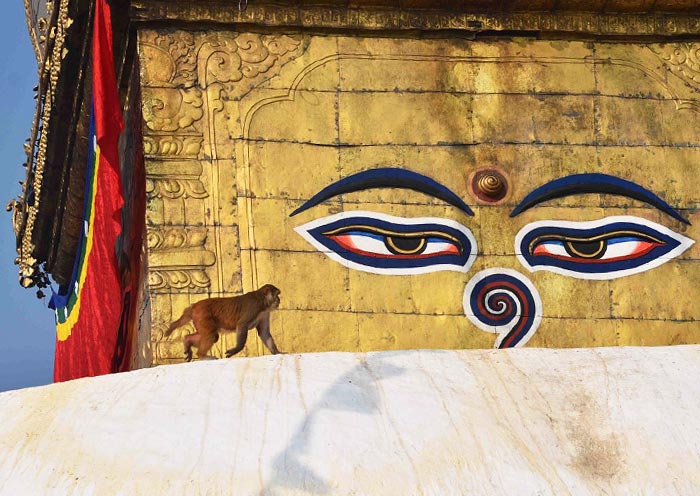
Architectural Style and Decorations: Hand-painted Mandalas Whisper Stories
The Monkey Temple is a testament to Kathmandu's unique architectural style.
The temple houses a variety of shrines and temples, some dating back to the Licchavi period. The stupa, with Buddha's eyes and eyebrows painted on, is a prominent feature of the complex. Intricate carvings, murals, and statues depicting various aspects of Buddhism and Hinduism adorn the complex.
The stupa, a white dome topped by a golden spire, has the eyes of the Buddha painted on all four sides. These eyes symbolize the Buddha's omniscience and compassion. The squiggle below the eyes, resembling a nose, is the Nepali number one, signifying unity. Above the eyes is a third eye, representing the Buddha's insight.
Mysterious Hidden Treasure & Panoramic View at Swayambhu Temple Complex
Perched atop a hill, Swayambhu Temple provides a sweeping vista of the Kathmandu Valley, revealing Kathmandu's vibrant colors, ancient structures, and the surrounding mountains in a stunning tapestry.
Within the Swayambhunath temple complex lies Shantipur, "City of Peace," a place shrouded in mystery.
Shantipur temple houses a secret chamber where it is believed that Master Shantikar Acharya, an 8th-century Tantric master, resides. Legend has it that during times of drought, the King of Nepal retrieves a secret mandala from this chamber, and once exposed to the sky, rain miraculously begins to fall.
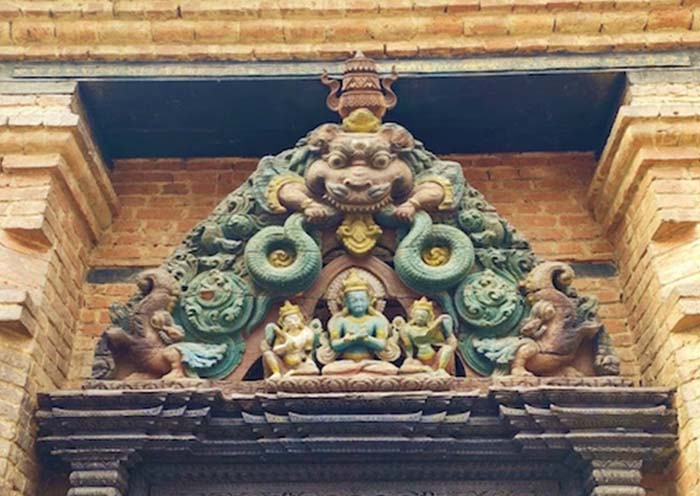
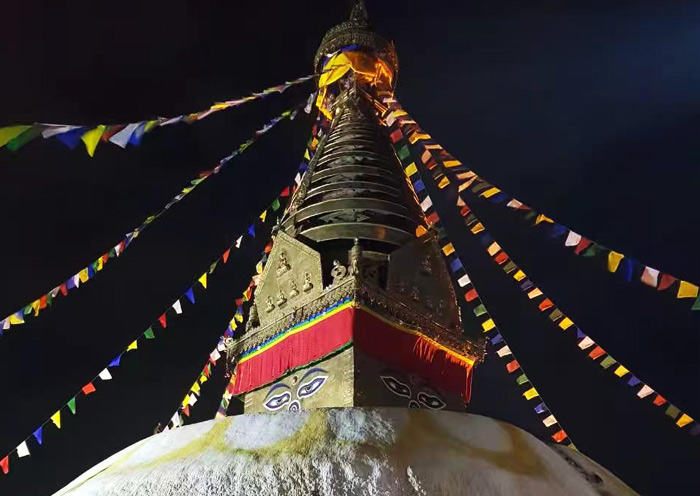
Things to Do at Swayambhu Temple Complex
- Start by climbing the 365 steps to the top of the hill.
- Visit the main stupa, which is a Buddhist shrine that dates back to the 5th century.
- Take in the views of Kathmandu Valley from the top of the hill.
- Visit the many smaller shrines and temples that are located around the main stupa.
- Feed the monkeys that live on the hill (but be careful, as they can be aggressive).
3. Boudhanath Stupa: Bathed in the Gaze of Buddha's Compassion
Boudhanath Stupa, located about 7 km (5 miles) from the center of Kathmandu, Nepal, is one of the largest spherical stupas in the world.
Boudhanath stupa is a symbol of enlightenment and faith, standing for over 1,500 years. The Boudhanath stupa is said to entomb the remains of Kassapa Buddha. The Boudhanath stupa is one of the most popular tourist sites in Kathmandu and a world heritage site.
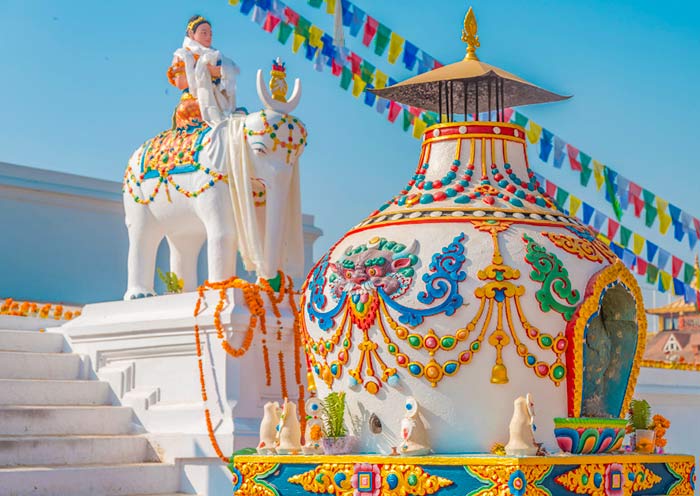
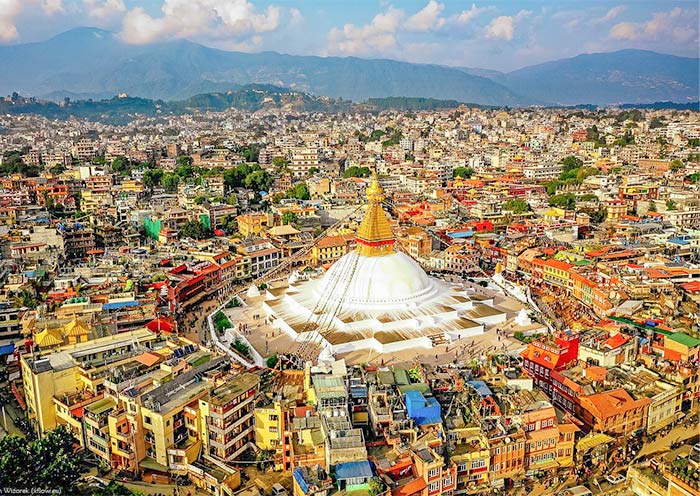
Architecture and Decoration: Buddha's Eyes, Love and Compassion
The Boudhanath stupa's impressive size and intricate design reflect the depth and richness of Buddhist teachings. Each element of the stupa's structure holds symbolic significance, representing the elements of nature, the path to enlightenment, and the treasures of Buddhism.
Boudhanath's beauty lies in its intricate details. The Boudhanath's stupa's spherical form symbolizes the universe, its 13 tiers representing the path to enlightenment. Gilded eyes of Buddha, gazing compassionately outwards, watch over the world.
Tibetan Buddhism Connection of Boudhanath Stupa
The Boudhanath stupa hosts the largest celebration of Losar (Tibetan New Year) in Nepal.
Many people walk around the stupa in a clockwise direction while reciting mantras and spinning prayer wheels. Prayer flags that are tied to the stupa carry prayers and blessings to the heaven. The Boudhanath's stupa is surrounded by monasteries, temples, and shrines of various Buddhist sects.
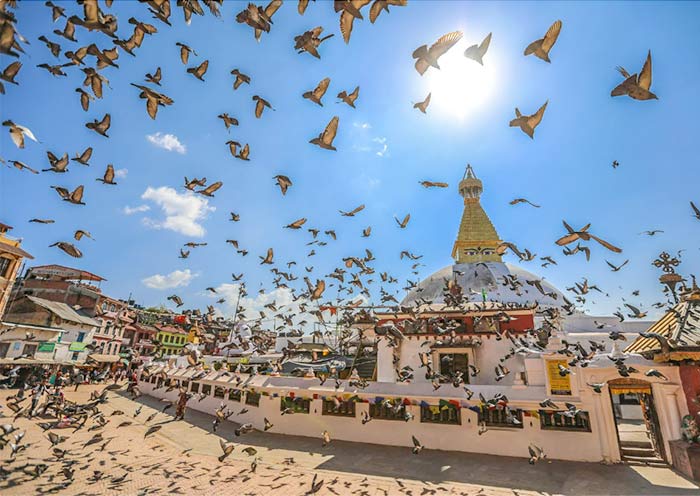
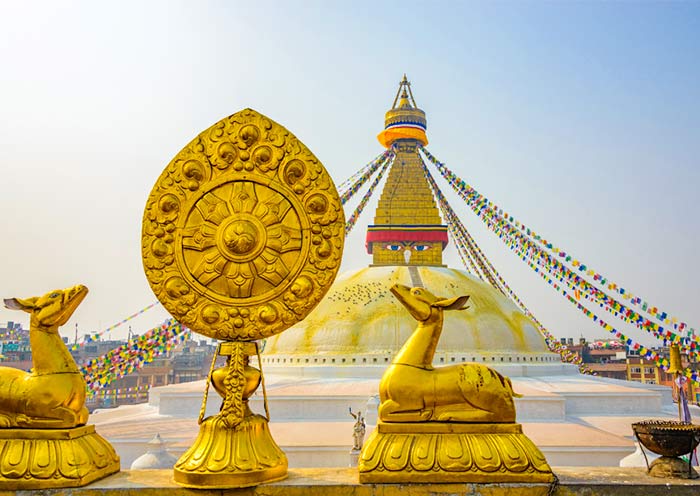
Things to do at Boudhanath Stupa & Temples
- Start by walking around the massive stupa, which is one of the largest in the world.
- Visit the main stupa, which is a Buddhist shrine that contains the relics of Buddha.
- Watch pilgrims performing a ritualistic circumnavigation, known as the 'kora'.
- Visit the many monasteries, temples, and shrines that are located around the stupa.
- Shop for souvenirs from local stores or vendors, such as cashmere, handmade clothes, and thangka paintings.
- Enjoy a meal at one of the various rooftop restaurants that offer a variety of cuisines, such as Chinese food , Bhutanese, Indian, and Nepali cuisine.
4. Kumari Ghar: The Palace of the Living Goddess in Kathmandu
Kumari Ghar is a palace in the center of Kathmandu city, next to the Durbar Square, where a young girl who is revered as the living goddess or Kumari resides. The tradition of worshipping a Kumari as a manifestation of the divine female energy or Shakti dates back to the Malla dynasty of Nepal.
The Kumari is believed to be the incarnation of the goddess Taleju or Durga, the patron deity of the Malla kings. She is selected from the Buddhist Shakya clan. She lives in the Kumari Ghar until she reaches puberty or suffers a serious injury, after which she returns to normal life and a new Kumari is chosen.
The palace is a masterpiece of Nepalese architecture, with intricate carvings and decorations on the walls and ceilings. The palace has three floors and a courtyard, and is surrounded by a wall with four gates. The main entrance has a wooden torana (gateway) with elaborate carvings of divine figures and scenes.
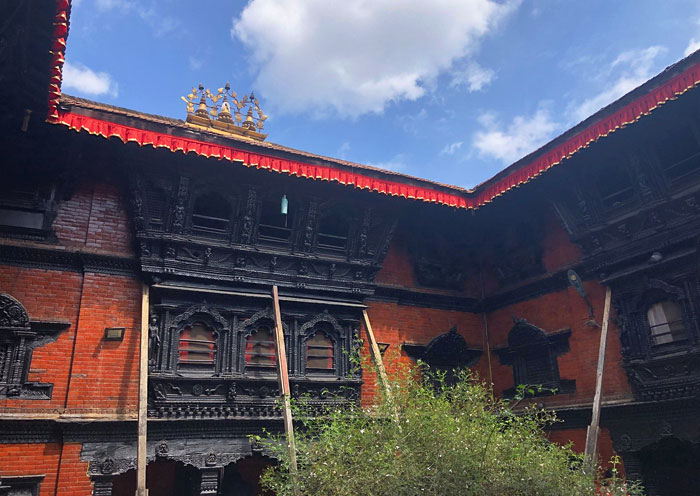
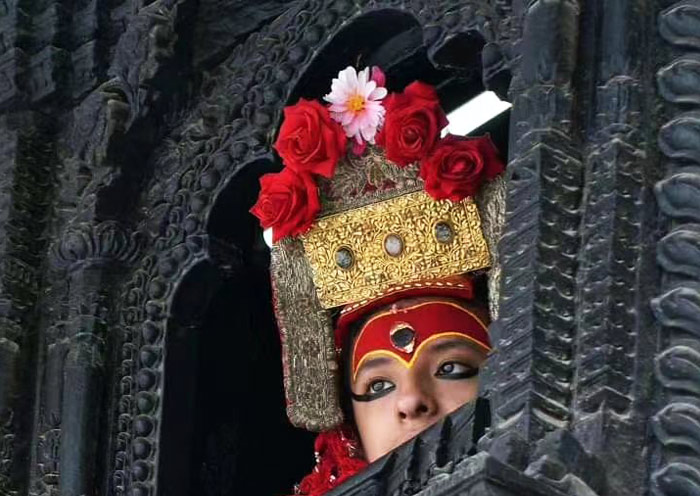
Things to do at Kumari Ghar:
- Catch a glimpse of the Kumari: Between 9-11 am, you might be fortunate to see the Kumari appear at the ornate window of the Kumari Ghar. Observe her grace and blessings with reverence.
- Appreciate the Architecture: The Kumari Ghar itself is a stunning example of Newar architecture.
- Learn about the Kumari Tradition: Discover the fascinating history and significance of the Kumari tradition, where young girls are chosen to embody the divine feminine energy.
- Explore Durbar Square: Within the historic Durbar Square lies Kumari Ghar. The close connection between Taleju Temple and Kumari Ghar reflects the link between the Living Goddess and the deity she embodies.
5. Changu Narayan Temple: The Oldest Hindu Temple in Nepal
Perched atop a lush green hill, overlooking the Kathmandu Valley, stands Changu Narayan Temple.
Believed to be the oldest Hindu temple in Nepal, dating back to the 4th century, Changu Narayan is dedicated to Lord Vishnu, the preserver of the universe. The temple complex also houses shrines dedicated to Lord Shiva, Ashta Matrika, Chhinnamasta, Kileshwor, and Krishna.
Venture into the realm of Changu Narayan, a spectacle for the senses. Pagoda rooftops, tiered in twos, aspire to touch the heavens, their surfaces etched with elaborate woodwork. The pagoda's crowns boast intricate depictions of Vishnu's 10 incarnations of Vishnu and various multi-armed Tantric goddesses.
Other statues show Vishnu in his various incarnations, or avatars. Behold Narsingha, the man-lion, tearing a man asunder with his bare hands. Gaze upon Vikrantha, the six-armed dwarf who morphed into a colossus.
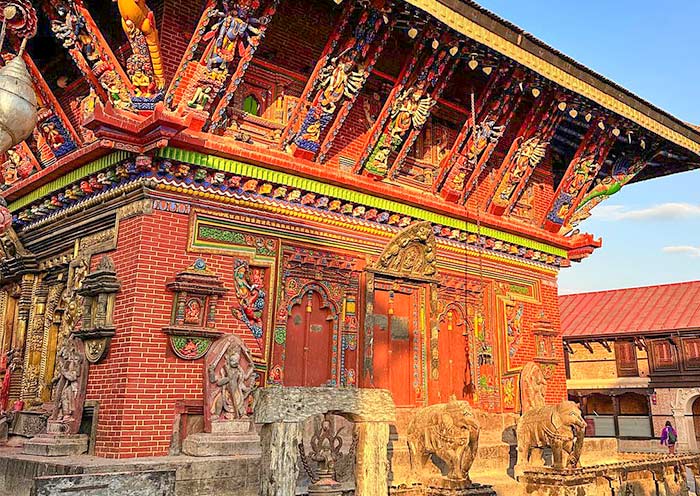
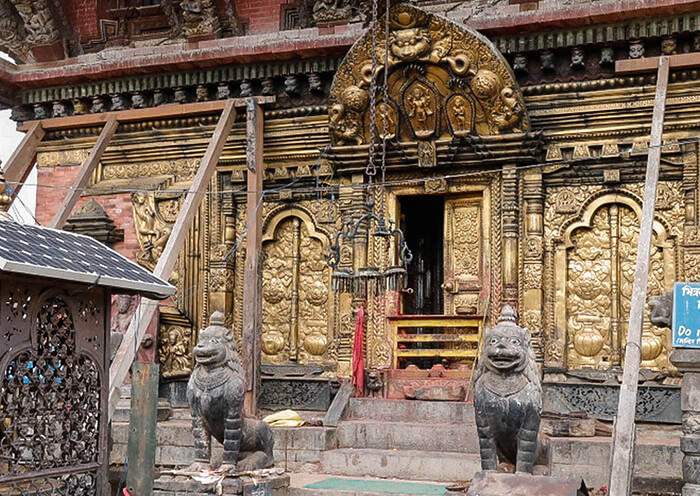
Things to do at Changu Narayan Temple
- Begin your journey at the famous main complex of Changu Narayan Temple in Kathmandu.
- From the temple, perched on a hill, soak in the panoramic views of Kathmandu's countryside and the Himalayas on clear days.
- Don't miss the Changu Museum, Living Traditions Museum, and Thangka Painting School, all located within the temple complex.
- Explore the temple grounds, visiting the many smaller shrines and temples that surround the main temple.
- Consider a day hike to Nagarkot or Bhaktapur from the temple.
6. Budhanilkantha Temple: The Sleeping Vishnu on the Cosmic Ocean
Slumbering serenely at the foot of Shivapuri Hill, Kathmandu, lies Budhanilkantha Temple, a sanctuary where tranquility whispers and stone sculpts a dream of divine slumber.
The architectural style of Budhanilkantha Temple combines traditional Nepali design elements with intricate woodcarvings and exquisite stone craftsmanship. The temple's roof is adorned with beautifully carved wooden struts and brackets.
The main attraction of the temple is the 5-meter long statue of Vishnu, carved from a single block of black basalt stone.
The statue depicts Vishnu in his cosmic sleep, resting on the coils of the serpent Ananta, who has 11 heads. Vishnu holds four symbols in his four hands: a discus, a conch shell, a mace, and a lotus. The statue is well decorated with a crown, earrings, necklaces, and garlands. The statue is surrounded by a rectangular pool of water in the temple area, which represents the cosmic ocean.
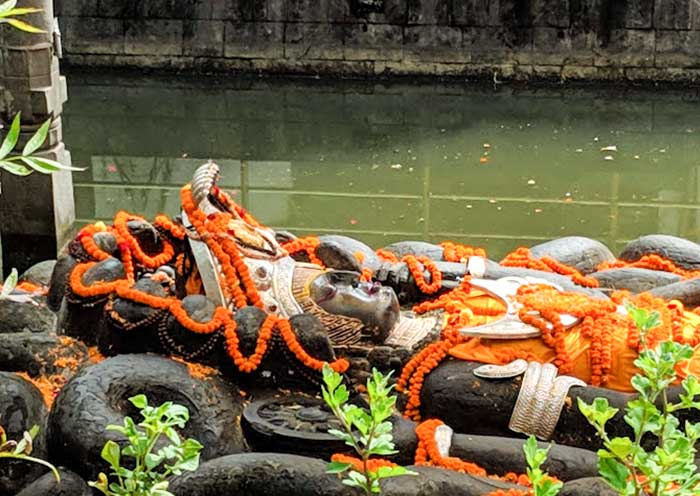
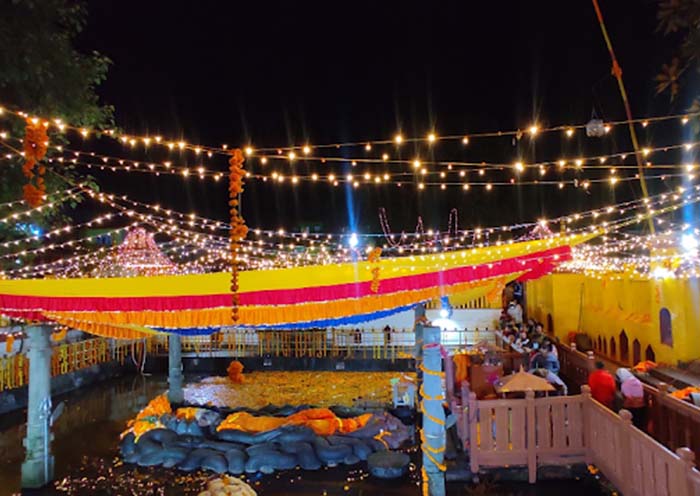
Things to do at Budhanilkantha Temple
- Witness the Floating Vishnu: The temple's main attraction is the colossal statue of Vishnu reclining on a bed of serpents, seemingly floating within a sacred pool. Take in the beauty and tranquility of this iconic landmark.
- Explore the Temple Grounds: The complex extends beyond the main pool, featuring smaller shrines dedicated to other deities, stupas, and traditional Nepalese architecture.
- Join the Morning Rituals: Arrive early (around 6-7 am) to witness the mesmerizing daily puja (worship) ceremony. Observe the offerings made to the statue.
Genral Tips for Visiting Temples in Kathmandu
- Shoe Etiquette: In most temples, you'll need to remove your shoes before entering certain areas, even if you cannot go inside the main temples.
- Offerings and Donations: You can purchase these from vendors outside the temple or bring your own. Donations are welcome but never feel pressured to give.
- Photography Courtesy: While some temples permit photography, be mindful of others where it's prohibited. Always ask permission.
- Maintaining Silence: Temples are sanctuaries for prayer and reflection. Speak softly and avoid loud conversations that might disturb the peaceful atmosphere.
- Circumambulation: Walking clockwise around the main stupa or shrine, known as circumambulation or Kora, is a common practice in both Buddhist and Hindu temples.
- Temple Openings and Schedules: Visiting times and days can vary across temples. Some open early in the morning, while others might have specific days for pujas or rituals. Research beforehand to avoid disappointment.
- Local Guides: Consider hiring a knowledgeable guide, especially for complex temple sites. They can share valuable insights into history, rituals, and local customs, enriching your temple experience. Contact us, get travel inspiration.
How to Plan A Trip to Nepal
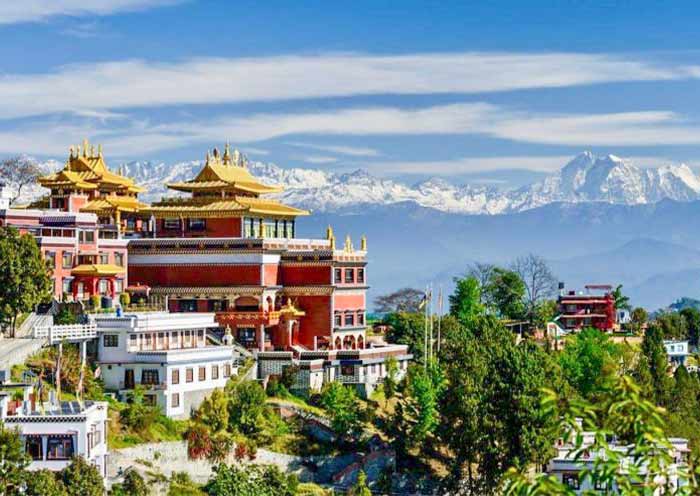
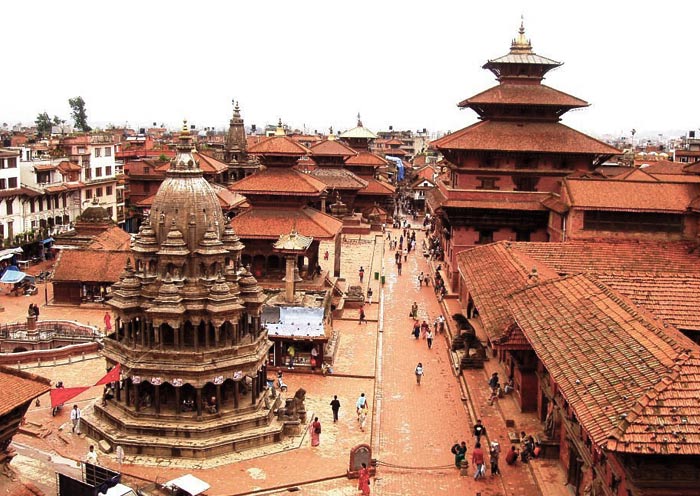
- Kathmandu (3 days): Temples & Thrum: Swayambhunath's views, Pashupatinath's rituals, Boudhanath's Tibetan energy. Catch a glimpse of the Kumari & haggle for souvenirs in Thamel.
- Chitwan (2 days): Jungle Thrills: Rhinos, tigers, monkeys on jeep safari at Chitwan National Park. Canoe the Rapti, spot crocs & birds. Immerse in Tharu culture.
- Pokhara (3 days): Lakeside Bliss: Hike to World Peace Pagoda for panoramas, boat on Phewa Lake. Adrenaline rush: white-water rafting or paragliding.
- Beyond: Trek to Poon Hill for Annapurna views or embark on epic journeys like Everest Base Camp.
- Include Bhutan: Check Nepal Bhutan Itinerary in details. Or just join a tour start your trip from Kathmandu to Bhutan>>
- Himalaya All the Way: Check break down of Tibet, Nepal & Bhutan. Epic journey from Tibet, China, to Nepal & Bhutan.>>
Tips: Rickshaw in Kathmandu, bargain respectfully, learn basic Nepali. Pack for diverse climates.
Travel with AOT, Discover Vibrant Kathmandu Temples
Discover the magic of Nepal with Asia Odyssey Travel!
With over a decade of expertise and deep-rooted local connections, we craft journeys that unveil the true essence of Nepal. Immerse yourself in the vibrant spirit of Temples in Kathmandu, marveling at the Swayambhunath stupa's golden majesty or take a thrilling safari in Chitwan National Park.
Our commitment to exceptional service ensures a seamless and unforgettable Nepalese travel experience:
- Personalized Planning: Skip the research, let our experts craft your dream Nepal adventure
- Peace of Mind: Flights, hotels, visa? We handle it all!
- Hiccups? We're your 24/7 travel guardian.
- Time-saving: One-stop shop, say goodbye to endless booking hassles
- Journey with Awareness: AOT's local team ensures experiences that are culturally sensitive
- Travel like a Local: Insider tips, secret savings, and authentic experiences await with our local guides
Asia Odyssey Travel, Your Best Travel Mate. Turn Travel Dreams into Reality!
Contact us today. Your dream Nepal trip awaits!
If you have any questions about this article, please contact us by submitting the following form and we'll immediately get back to you.

